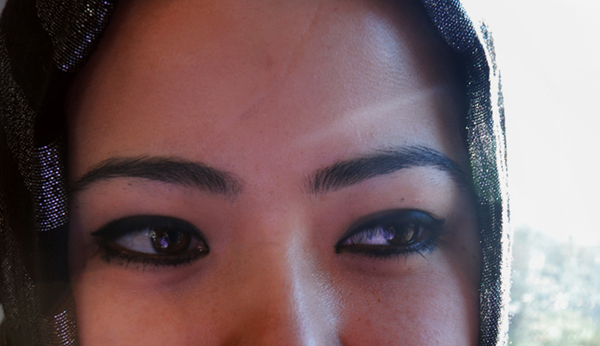Wearing their faith keeps their identity: headcoverings worn out of religious respect
January 13, 2010 by Abby Wiseman

Dur-e-aden was apprehensive about wearing the hijab when she first moved to Canada two years ago; in Pakistan wearing the hijab was normal, but in Canada she stands out when walks down the street.
“It gives away my identity. Sometimes it’s good, sometimes it’s bad, but I’m ok with that,†said Dur-edan. “People should know who I am, like I don’t want to hide it or anything.â€
The Islamic religion requires a woman to dress modestly in loose clothing covering her body, except for her hands. The wearing of the hijab comes
from the Qu’aran, the Islamic religious text, which says that Muslims, not just Muslim women, should dress modestly.
“The main purpose of it is to like protect your chastity, so you’re not supposed to reveal to much,†said Dur-e-aden, who started wearing the hijab when she was 14.
Wearing the hijab doesn’t pose any problems for Dur-e-aden, who wears it everywhere she goes. She even has a hijab designed for playing sports.
Dur-e-aden isn’t unique. Whether you’re wandering down Main Street or hanging out downtown, one of the most visible indication that Vancouver is a multicultural city is many people wear some form of head covering.
The Muslim population in B.C. is approximately 56,000, making it the third-largest such population in Canada after Ontario and Quebec, according to Statistics Canada.
B.C. also has a large Sikh population. The 2001 census reported there are 125,000 Sikhs living in B.C., many living in Surrey and East Vancouver.
According to Pritam Singh Aulakh, president of the Akali Singh Society, Sikhism became prominent in the 15th century, and men began to wear the turban because it was considered unnatural and unreligious to cut the hair from any part of the body. Sikhs would wear a turban to keep their uncut hair neat and tidy.
Sumanpal Singh, a student at Kwantlen Polytechnic University said that those who choose not to wear the turban are not really Sikhs.
“Wearing the turban is doing Gods will,†said Singh.
Aulakh said that if you are living your life in the way of God but choose to not wear the turban, you are still Sikh.
“Believing in God in Sikhism is doing good things…don’t tell lies, work for a living and share with others, and be truthful,†said Aulakh. “So if you are not practicing these things, then you are not Sikh.â€
In Sikhism and Islam, the head coverings are gender-specific. In Judaism, men and women can wear a head covering called the yarmulka or kippah.
The yarmulka and the kippah are the same thing, but, said Rabbi Infeld of the Beth Israel Synagogue, “yarmulka†is Yiddish, from a dialect of Hebrew that grew out of German. The word “kippah†is Hebrew.
A kippah is a small round hat that sits on the back of the head and, according to Infeld, is worn as a sign of respect to God and to all people.
Many Jews don’t wear the kippah all the time, many wear it only when praying and eating.
“I personally keep my head covered at all time,†said Infeld. “People who are more observant of Jewish law tend to do that.â€
To Infeld, a Jew does not have to where a kippah to be faithful.
The Jewish population is small in B.C. with only 21,000 Jews. The Jewish community in Vancouver is concentrated around Oak Stre



Comments
Feel free to leave a comment...
For details on how we handle comments, select "Our Comment Policy" from the "About" drop-down menu at the top of the page.
Note: All comments are moderated and must be approved before they are published.